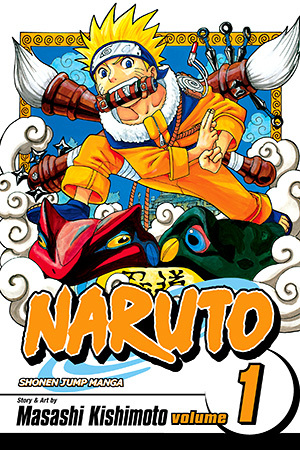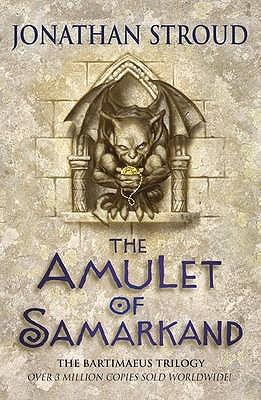
No artist works in isolation (or at least none I know of). When I started creating the world and characters of The Rarkyn’s Familiar, I had certain ideas in mind of what I wanted—elements I’d admired in other author’s works or fascinating ideas I’d seen that I wanted to explore myself.
I’ve talked about some of these already in my other blogs, but here’s a more detailed list of the most influential works that inspired my story, its world and its magic systems.

I’ve always loved the creature companion trope but these were the two series that truly cemented that love. I encountered Tamora Pierce’s The Immortals series when I was about 10—a Christmas present I think—and was utterly captivated by the protagonist, Diane, who had lived with wolves and could speak to animals, and the world in which she lived, full of stormwings, hurroks and spidrens. There was also a fabulous redemption arc where one of the early book’s antagonist’s is turned into a stormwing—essentially a harpy-like creature with steel-feathered wings—and the readers start to learn more about the monsters and sympathise with them. Looking back on it now, this series is likely where the earliest seed for my rarkyns was planted: a monstrous avian race that becomes less monstrous the more you begin to know them.
Farseer and The Tawny Man Trilogies by Robin Hobb

These books (and later the rest of Realm of the Elderlings series) showed me there was an appetite for the creature companion trope in adult fiction. Between reading The Immortals as a tween and the first book of the Farseer Trilogy in my early 20s, I had gone through a long drought of this trope. I looked for it wherever I could, but finding it was a rare thing and mostly confined to middle grade fiction I’d outgrown. (This was well before Amazon and online bookstores came to Australian shores, so I was limited by the small selection of science fiction and fantasy at my local bookstore and rifling for fantasy books in the fiction collection at my local and school libraries where the books weren’t organised by genre).
And then I found Assassin’s Apprentice in my first year of uni and fell in love with it.
I have a memory of being so captivated by one of the Tawny Man books I missed my bus three times after a uni exam because I was so engrossed with the series. I ended up having to pause my reading so I wouldn’t miss the fourth bus (and later almost missed my stop to get off too).
What drew me into the series was the animal companion trope, but what kept me reading was the depth of the characters and the worldbuilding (my goodness, the worldbuilding). When I finished the last book in Hobb’s third trilogy of the Elderlings world, Fool’s Fate, I sat there in stunned silence trying to wrap my head around the fact that what I’d just read wasn’t real.
In terms of inspiration, I owe a lot to these books. When I started writing The Rarkyn’s Familiar, I strived to create a world as rich and vivid as Hobb’s. Another inspiration was Hobb’s magic systems—one revered and accepted, the other shunned and criminalised—which in turn influenced my choice to create the mancer’s galdar magic system and the illegal magic users, called krats, who use different magics.
Berserk by Kentaro Miura (manga)

Beserk was my first experience of grimdark fantasy and it totally blew my mind. Its corrupt institutions were what inspired the Order in The Rarkyn’s Familiar. In the manga, the main character, Guts, is pursued by the Church for his connection to unholy monsters that try to eat him every time the sun goes down. This pursuit concept is what inspired the Order’s pursuit of Lyss and Skaar through The Rarkyn’s Familiar.
Another feature I particularly admired in this series was the found family element that runs through it—even if someone in that family betrays the rest.
In terms of character, Guts stands at the top of my list of fantasy characters with grit. Despite being knocked down repeatedly, and being betrayed and cursed, Guts always keeps on getting up and continues to fight. That’s not to say that grit doesn’t come at a cost. Guts bears a lot of scars, both physical and mental, and I leaned on some of that when I wrote Lyss and Skaar.
Read more about the setting of The Rarkyn's Familiar in: A crumbling empire: the story behind The Rarkyn’s Familiar
Naruto by Masashi Kishimoto (manga)
Flame of Recca by Nobuyuki Anzai (manga)
I discovered Naruto way back in 2000 when the only English version you could read were the online fan translations of Weekly Shonen Jump. I have vivid memories of waiting six months or more for the weekly translations to stack up and then binging them all in one night until the series was finally picked up by Viz media and published in English. The element of Naruto I particularly loved was the hand signals that the characters used to perform various ninja techniques. Similarly, Flame of Recca also had its main character write out his “spell” to perform it.
This was something I decided to emulate in The Rarkyn’s Familiar to make it a point of difference. Rather than a mancer reciting an incantation—which I felt had been done before—I decided that part of my magic system would require its wielders to cast their spells with their fingers.
These two books inspired part of the galdar magic system seen in The Rarkyn’s Familiar. Both feature the use of circles and glyphs to control magical creatures. In the case of The Bartimaeus Trilogy, the circles summon and control djinni from the Otherworld; in The Rithmatist, circles grant their drawers the ability to create (and control) Chalklings. What I particularly loved about the Bartimaeus Trilogy was the idea that a wizard could make a mistake in the drawing of their circle, which would allow the djinni to escape. This idea fed into my galdar system, where aetherlings could break through weak points in a circle if they were strong enough.

I can’t remember when I watched Princess Mononoke for the first time, but it would have been in my late teens. What I do remember is simply adoring it. If you’d seen the film and read The Rarkyn’s Familiar you’ll likely recognise the similarities between the rattling tree spirits of Princess Mononoke and the smarokk shadowlings Lyss sees in the Otherworld shallows. When I set out to create the world of The Rarkyn’s Familiar, I wanted it to feel as lush as the world I’d seen in Princess Mononoke.
The other thing that blew my mind when watching this film was that I was able to sympathise with the antagonists. At the time, I’d never encountered antagonists written this way. Each one believed they were in the right and each was simply trying to protect what they cared about. This was something I carried into The Rarkyn’s Familiar, particularly with the story of Archer and how he came to be what he is.

There’s a bit of a story behind this one. When I was originally casting around for a name to use for Skaar, my mind landed on the original 1994 Stargate movie. In the movie, the main characters are befriended by a boy called Skaa when they visit an alien world. I always thought it a neat name and figured it would fit well with my rough-around-the-edges rarkyn character. However, because I never saw the name spelled and I assumed it was spelled “scar”. I didn’t want the name to get confused with the physical ailment since my characters had some of those too, so I changed the spelling to make it look more Old Norse like. It was only much later did I see the same version of the name used for a Marvel Comics character and in a Terry Brooks novel (doh—and I thought myself so clever in coming up with it too!). But by that point, the name and character of Skaar was cemented in my head and I couldn’t bring myself to change it.
The Rarkyn's Familiar releases on 19 April 2022! Order your copy here.

Liked this article? Sign up to Nikky's mailing list to get a free story along with monthly updates, articles and interviews delivered straight to your inbox!







